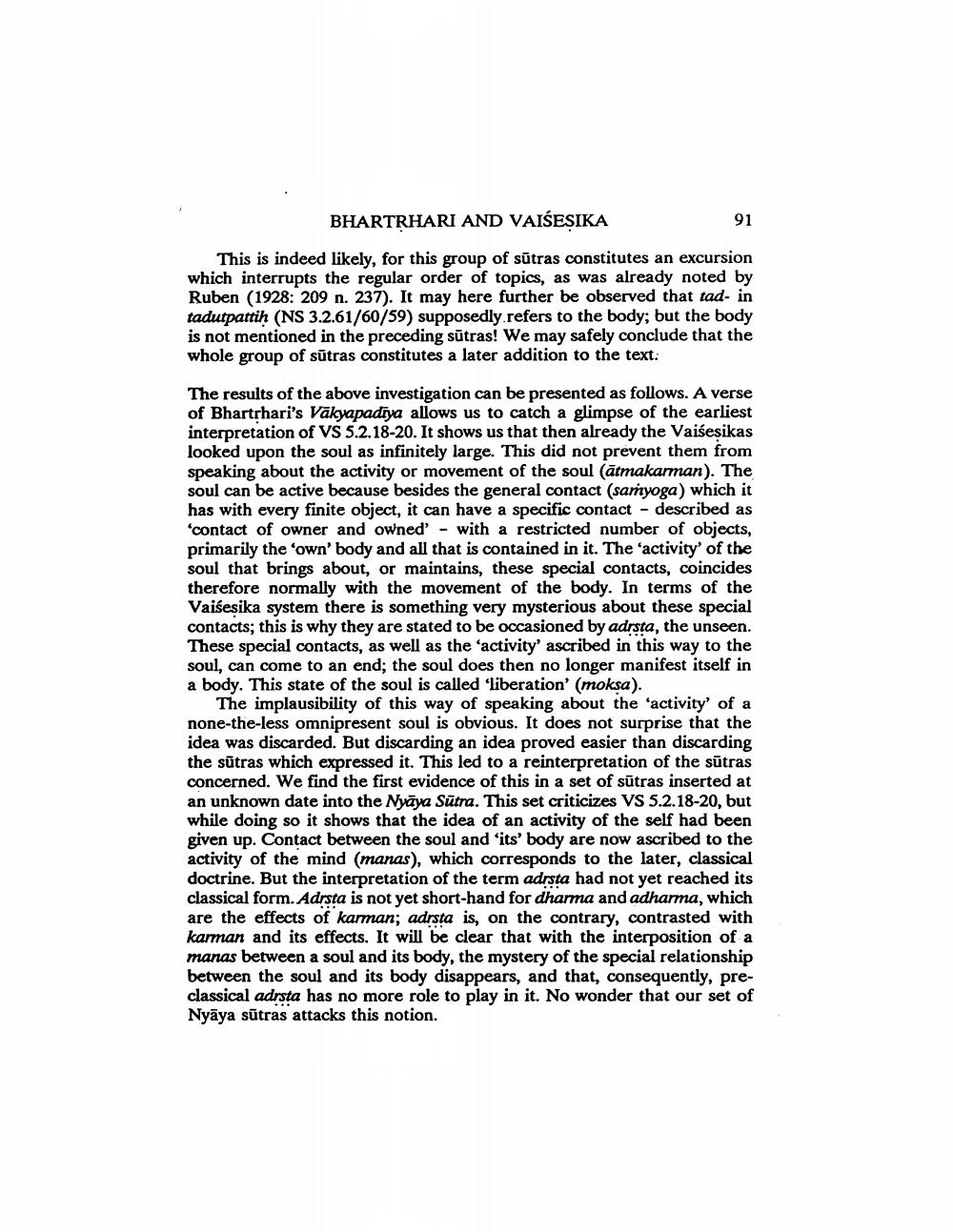________________
BHARTRHARI AND VAIŚESIKA
91
This is indeed likely, for this group of sūtras constitutes an excursion which interrupts the regular order of topics, as was already noted by Ruben (1928: 209 n. 237). It may here further be observed that tad- in tadutpattih (NS 3.2.61/60/59) supposedly refers to the body; but the body is not mentioned in the preceding sūtras! We may safely conclude that the whole group of sūtras constitutes a later addition to the text.
The results of the above investigation can be presented as follows. A verse of Bhartrhari's Vākyapadiya allows us to catch a glimpse of the earliest interpretation of VS 5.2.18-20. It shows us that then already the Vaišesikas looked upon the soul as infinitely large. This did not prevent them from speaking about the activity or movement of the soul (ātmakarman). The soul can be active because besides the general contact (saryoga) which it has with every finite object, it can have a specific contact - described as 'contact of owner and owned' - with a restricted number of objects, primarily the ‘own' body and all that is contained in it. The 'activity' of the soul that brings about, or maintains, these special contacts, coincides therefore normally with the movement of the body. In terms of the Vaišesika system there is something very mysterious about these special contacts; this is why they are stated to be occasioned by adrsta, the unseen. These special contacts, as well as the 'activity' ascribed in this way to the soul, can come to an end; the soul does then no longer manifest itself in a body. This state of the soul is called 'liberation' (moksa).
The implausibility of this way of speaking about the 'activity' of a none-the-less omnipresent soul is obvious. It does not surprise that the idea was discarded. But discarding an idea proved easier than discarding the sütras which expressed it. This led to a reinterpretation of the sūtras concerned. We find the first evidence of this in a set of sūtras inserted at an unknown date into the Nyāya Sūtra. This set criticizes VS 5.2.18-20, but while doing so it shows that the idea of an activity of the self had been given up. Contact between the soul and 'its' body are now ascribed to the activity of the mind (manas), which corresponds to the later, classical doctrine. But the interpretation of the term adrsta had not yet reached its classical form. Adrsta is not yet short-hand for dharma and adharma, which are the effects of karman; adrsta is, on the contrary, contrasted with karman and its effects. It will be clear that with the interposition of a manas between a soul and its body, the mystery of the special relationship between the soul and its body disappears, and that, consequently, preclassical adrsta has no more role to play in it. No wonder that our set of Nyāya sūtras attacks this notion.




